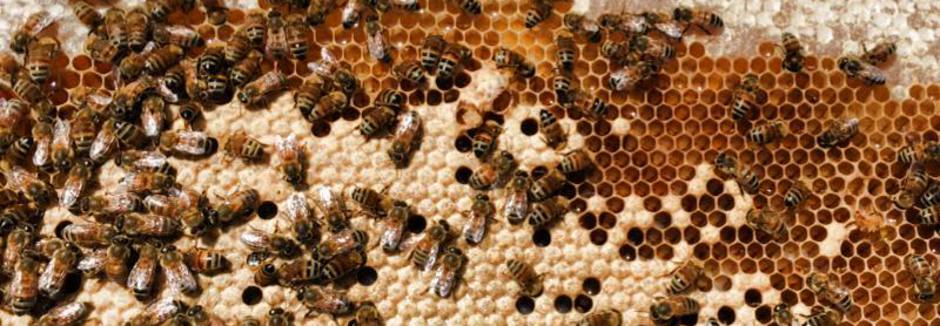
Beekeeping Tips for February
-
Activity increases for the beekeeper this month. Trees should be starting to bloom providing pollen. A healthy hive has bees flying on warm days and bringing in pollen. Pollen stores coming into the hive is a sign that brood rearing is taking place.
-
This month is a good time to combine weak colonies (i.e., fewer than 2 frames of bees).
-
Check hives early this month for adequate food supplies, to verify a queen-right hive and to look for the presence of disease. Be careful that you do not overly expose the brood to cold temperatures while examining the hives. Work bees on sunny days with the temperature near 60 degrees and little wind.
-
A medium (6-1/4”) frame holds 2-1/2 to 3 pounds of honey and a deep frame holds about 5 to 6 pounds of honey. There should be 6 to 10 or more frames of bees and 10 to 30+ pounds of honey (at least two deep frames). If needed, feed sugar syrup at a ratio of 2 parts sugar to 1 part water (by weight). A colony rearing brood consumes about 10 pounds of food per week.
-
Consider feeding pollen substitute to stimulate the queen into laying. Build up of brood should be timed so that it is not too early resulting in swarming, but large enough to maximize honey production during the April honey flow.
-
Check to see if hive boxes are still level after the winter with just a little tilt forward so they drain moisture.
-
Remove or enlarge entrance reducers near the end of the month if the weather warms. Do this sooner if the weather warms and bee activity indicates congestion at the hive entrance.
-
Move any hives while honey stores are low. Intact hives may be moved at night, or pick a cold day when the bees are inside. This is also a good time to find new locations for additional or current hives.
-
Treatment for varroa should be in place no later than February 1 to allow treatment time before the honey flow.Follow product directions exactly for the amount to be used and the time to leave in place.
-
Check stored supers and equipment to confirm all is in good condition.
-
A cool dry day is good for repainting hives.

